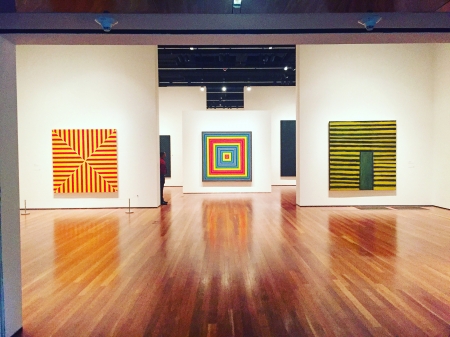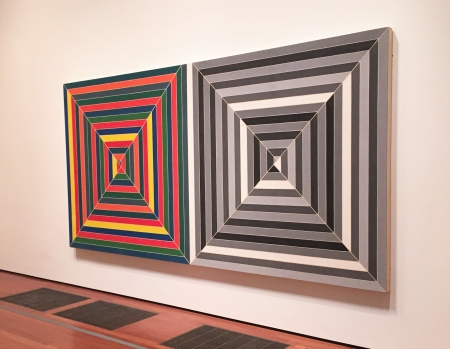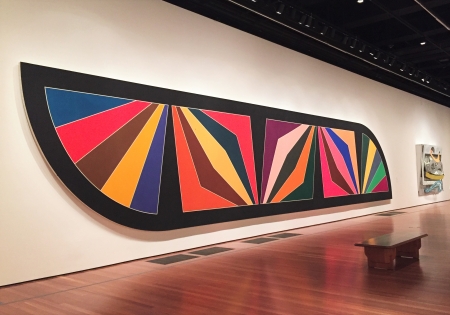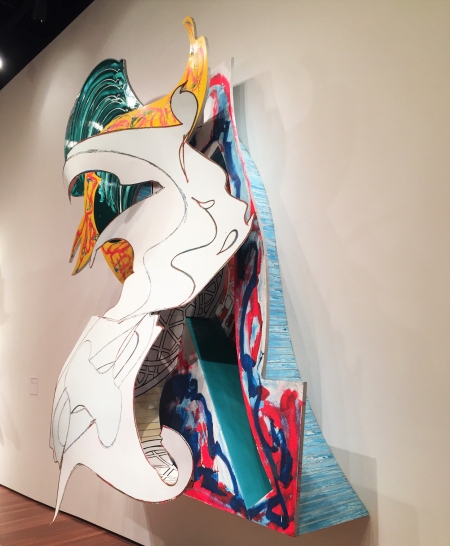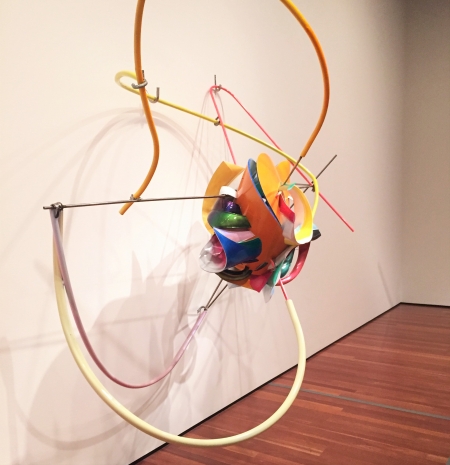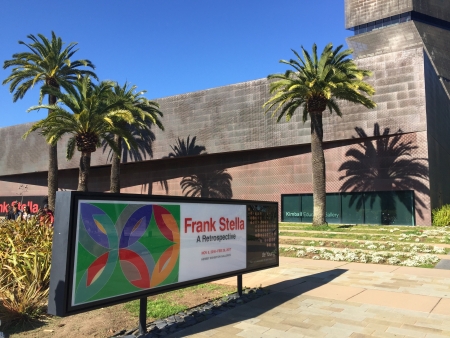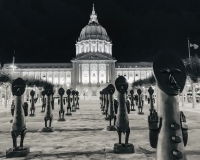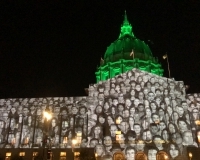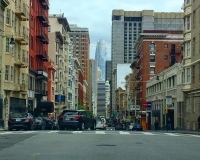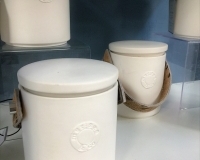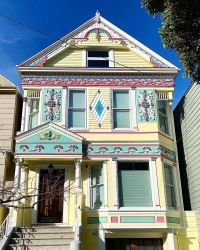FRANK STELLA AT THE DE YOUNG
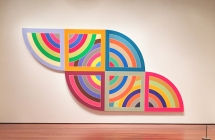
Frank Stella, A Retrospective opened on November 5 for a 4 month exhibit at the de Young Museum. Splendid and masterful!
A brilliant exhibition dedicated to an amazing artist. His longevity and his creativity, constantly renewed and reinvented through new supports, new technologies, are amazing and inspiring.
The Fine Arts Museums of San Francisco are pleased to present Frank Stella: A Retrospective, an expansive presentation surveying the career of this towering figure in post-WWII American art. Fifty works, including paintings, reliefs, sculptures and maquettes, will be displayed at the de Young, representing Frank Stella’s prolific output from the late 1950s to the present day. This will be the first comprehensive U.S. presentation devoted to the artist since 1970.
''Frank Stella's impact on abstract art is unmatched. This retrospective is timely and important for San Francisco audiences. To see the development of an artist who created masterpieces just one year out of college, who is still working as a major force today—it is impressive to see an extraordinary body of work that spans six decades.'' says Max Hollein, Director of the Fine Arts Museums of San Francisco.
Stella first burst into the New York art world in 1959, at the age of twenty-three, when four of his Black Series (1958-1960) paintings were included in the group exhibition, Sixteen Americans, at the Museum of Modern Art. In the following six decades he has remained one of the most important and influential figures in the evolution of modern art. Stella anticipated and pioneered many of the explosive changes in the art world, and remains an enduring figure of both critical and popular attention, as well as controversy.
''Frank Stella's works span the spectrum of art from Minimalist to Maximalist. In both ambition and achievement, his work appears to be the output of a dozen different artists. By combining intellectual rigor with aesthetic audacity these works have transformed the history of art.'' notes Timothy Anglin Burgard, Curator-in-Charge of American Art at the Fine Arts Museums of San Francisco.
The exhibition opens with paintings that Stella created as he forged his identity as an artist, including East Broadway and Great Jones Street (both 1958). Both works emulate and critique Abstract Expressionism, the dominant art movement of the time, but also reveal Stella’s early interest in the manipulation of space. The artist’s subsequent work, the legendary series of Black paintings (1958–1960) which includes Die Fahne Hoche! (1959) are formed exclusively of parallel bands of black paint separated by thin strips of unpainted canvas. Simple in form but far-reaching in their implications, these paintings inspired both painters and sculptors associated with the emerging Minimalist art movement.
The following Aluminum (1960) and Copper (1961) series employ shaped canvases, a radical innovation that rejected the traditional conception of a painting as a pictorial “window” into another space or realm. Works such as Creede II (1961) blur the boundaries between the art and its environment. Turning from the monochromatic palettes of his previous works, Stella reintroduced vivid colors in the Benjamin Moore (1961) series, created with commercial house paints. Jasper’s Dilemma (1962) from the Mitred Maze (1962–1963) series, confront both the artist and the viewer with a choice between the seductive pleasures of color and the intellectual possibilities of monochrome.
Stella’s monumental works from the Protractor (1967–1971) series, such as Damascus Gate Stretch Variation III (1970), challenged the art world idea that modern art should not be beautiful, let alone popular. The artist believed that abstract painting had reached a crucial stage—embraced by critics, collectors, and curators, but lagging behind new developments in contemporary art.
Stella developed his own expanded conception of space in the Cones and Pillars (1984–1987) series, which included works such as Gobba, Zoppa e Collortorto (1985). Monumental reliefs from the Moby-Dick (1986–1997) series such as The Whiteness of the Whale (1987) expand space further with forms that suggest perpetual energy and motion.
The exhibition concludes with recent works, including those that Stella has created using advanced technologies such as computer-aided design software and three-dimensional printing. In works including K.144 (2013), which evokes the experience of listening to music in space and time, Stella has deemphasized the sculptural properties of mass and weight, in favor of gravity-defying forms that convey the ways in which sounds can fill—and seemingly shape—space.
Frank Stella himself will attend a conversation with Timothy Anglin Burgard on Nov. 18, 2016 at the de Young. Unfortunately, the event has already sold out.
FRANK STELLA: A RETROSPECTIVE
@ the de Young Museum
November 5, 2016 - February 26, 2017
Everything you should know about the exhibition
Agenda
-
Movie releases, Festivals & DVDs
-
Theatre plays, Ballet, Opera
-
Jazz, Rock, Pop, Symphonic & Co
-
Museums and Art Galleries
-
For them... with them...
-
Games and sports events
-
If you have some spare time...
